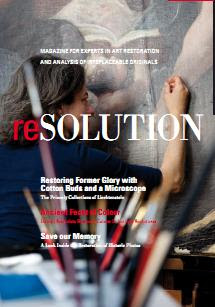
Title: Tracking Colour. The polychromy of Greek and Roman sculpture in the Ny Carlsberg Glyptotek. Preliminary Report 2
Editor: Jan Stubbe Østergaard and the Copenhagen Polychromy Network
Publisher: Ny Carlsberg Glyptotek & the Copenhagen Polychromy Network
Year: 2010
Pages: 88
ISSN: 1904-1888
Link: http://www.glyptoteket.dk/... (PDF , 3.79 Mb)
From the Preface:
This report is a preliminary account of the 2010 activities of the NCG/CPN ‘Tracking Colour’ project. It offers an overview of salient aspects of developments in 2010, ending on a very happy note: an application to the Carlsberg Foundation for funding of a two-year prolongation of the project, from June 1st, 2011, has met with success. [...]
Table of Contents (short version):
‘Tracking Colour’ in 2010, Jan Stubbe Østergaard
NCG/CPN INVESTIGATIONS IN 2010
The Technical Investigation of Sculptural Polychromy at the Ny Carlsberg Glyptotek 2009–2010 – An Outline, Maria Louise Sargent and Rikke Hoberg Therkildsen
Research on Ancient Sculptural Polychromy with Focus on a 2nd Century CE Marble Amazon, Maria Louise Sargent and Rikke Hoberg Therkildsen
The Sciarra Amazon Investigation: Some Archaeological Comments, Jan Stubbe Østergaard
DIGITAL DATA ASSETS MANAGEMENT
Tracking Colour Online: Managing and Sharing the Digital Assets of the NCG/CPN Project, Amalie Skovmøller






